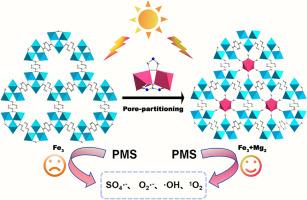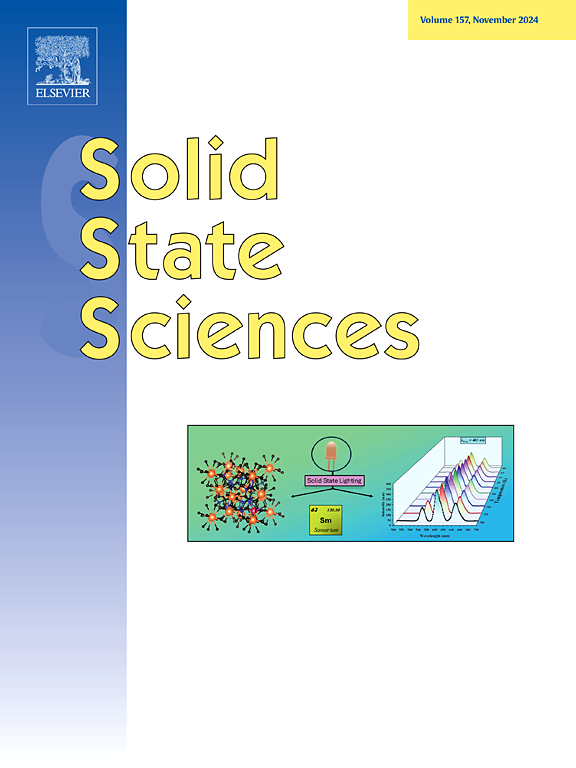Pore-partitioned bimetallic metal-organic frameworks for efficient photocatalytic activation of peroxymonosulfate
IF 3.3
3区 化学
Q2 CHEMISTRY, INORGANIC & NUCLEAR
引用次数: 0
Abstract
Metal-organic frameworks (MOFs) have been widely explored in photocatalytic peroxymonosulfate-based (PMS) advanced oxidation processes (AOPs) due to their highly tunable and porosity structures. In this work, three pore-partitioned MOF materials, namely [Fe3M2O(BDC)3(trz)3Cl2(H2O)4]·solvent (Fe3+M2, M = Mg, Fe, or Zn, BDC = terephthalic acid, trz = 1,2,4-triazole), were successfully synthesized by embedding binuclear units [M2(trz)3] (M = Mg, Fe, or Zn) into a MIL-88B structure (Fe3). It is demonstrated that binuclear units can introduce a large number of potential open metal sites, regulate framework stability, and optimize adsorption capacity, thereby enhancing the photocatalytic property of MOFs. Fe3+Mg2/PMS system showed a RhB removal efficiency of 97.5 % in 10 min under visible light irradiation, giving a degradation rate constant of 0.28 min−1. In addition, the photocatalytic mechanism was also systematically investigated. This study provides a new clue for developing highly efficient and stable MOF-based catalysts for AOPs.

孔配双金属金属有机骨架用于过氧单硫酸盐的高效光催化活化
金属有机骨架(MOFs)由于具有高度可调性和多孔性,在光催化过氧单硫酸盐基(PMS)高级氧化工艺(AOPs)中得到了广泛的研究。本研究通过在MIL-88B结构(Fe3)中包埋双核单元[M2(trz)3] (M = Mg, Fe,或Zn),成功合成了三种孔分割MOF材料[Fe3M2O(BDC)3(trz)3Cl2(H2O)4]·溶剂(Fe3+M2, M = Mg, Fe,或Zn), BDC =对苯二甲酸,trz = 1,2,4-三唑)。研究表明,双核单元可以引入大量潜在的开放金属位点,调节骨架稳定性,优化吸附容量,从而提高mof的光催化性能。Fe3+Mg2/PMS体系在可见光照射下10 min的RhB去除率为97.5%,降解速率常数为0.28 min−1。此外,还对其光催化机理进行了系统的研究。本研究为开发高效、稳定的mof基AOPs催化剂提供了新的思路。
本文章由计算机程序翻译,如有差异,请以英文原文为准。
求助全文
约1分钟内获得全文
求助全文
来源期刊

Solid State Sciences
化学-无机化学与核化学
CiteScore
6.60
自引率
2.90%
发文量
214
审稿时长
27 days
期刊介绍:
Solid State Sciences is the journal for researchers from the broad solid state chemistry and physics community. It publishes key articles on all aspects of solid state synthesis, structure-property relationships, theory and functionalities, in relation with experiments.
Key topics for stand-alone papers and special issues:
-Novel ways of synthesis, inorganic functional materials, including porous and glassy materials, hybrid organic-inorganic compounds and nanomaterials
-Physical properties, emphasizing but not limited to the electrical, magnetical and optical features
-Materials related to information technology and energy and environmental sciences.
The journal publishes feature articles from experts in the field upon invitation.
Solid State Sciences - your gateway to energy-related materials.
 求助内容:
求助内容: 应助结果提醒方式:
应助结果提醒方式:


